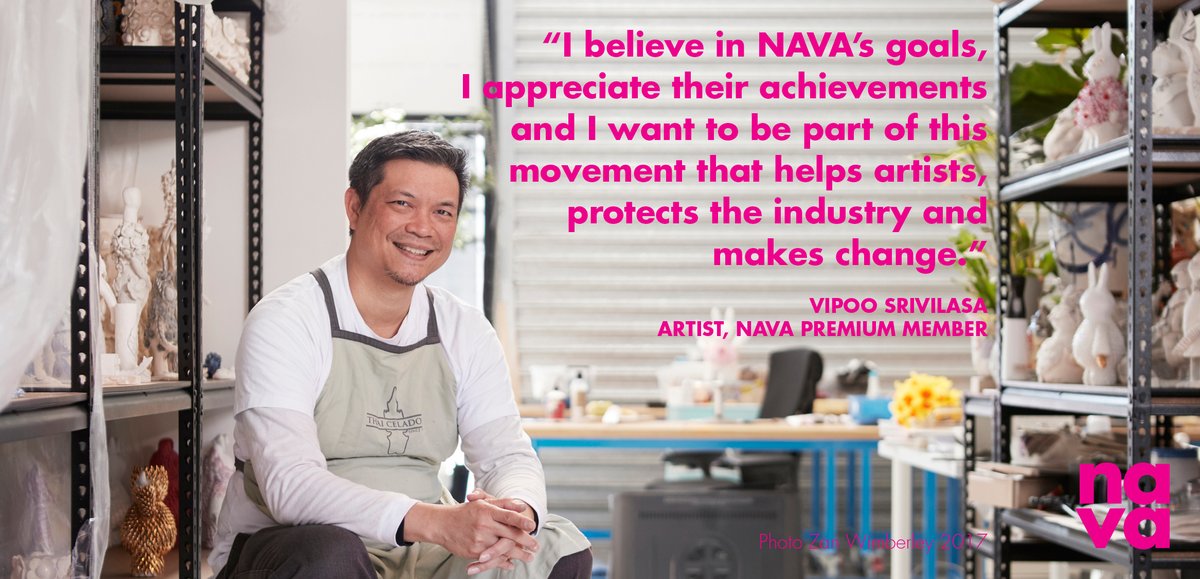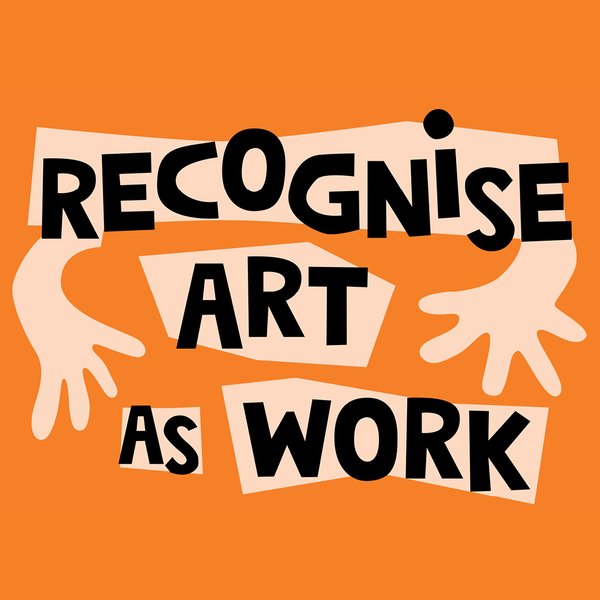Campaigns
NAVA regularly undertakes campaigns to drive significant changes or to introduce new policies for the Australian visual arts, craft and design sector.
NAVA regularly undertakes campaigns to drive significant changes or to introduce new policies for the Australian visual arts, craft and design sector.

Campaigning encompasses a wide range of actions, including providing information and advice to politicians, their advisers and departments at all levels of government. This can involve writing letters, making submissions in response to government inquiries, and providing advice and feedback to arts funding authorities. The advice given is grounded in research and consultation with the sector.
NAVA undertakes various activities to advocate effectively: conducting surveys and industry roundtables, forming action groups, building alliances with other organisations, providing media commentary, and stimulating informed debate through public forums and online platforms.
Your participation is a vital ingredient. NAVA encourages you to add your voice to ensure that policies and investments are well-informed and effective in supporting visual artists, arts workers and organisations. NAVA issues calls to action and coordinates the participation of its Members and the broader visual arts community to express their views and join campaigns at strategic moments. By working together, we can improve the fundamental conditions of work and practice.
The agency of the Aboriginal and Torres Strait Islander visual arts, craft and design sector requires strong investment in First Nations workforce development.
Public galleries and museums across Australia house extensive collections of First Nations artwork and cultural materials. These institutions regularly showcase the work of First Nations artists and serve as essential resources for schools, aligning with First Nations curriculum outcomes. Despite this, only four per cent of the workforce in these public galleries are First Nations peoples.
As nearly every state and territory plans to build a First Nations gallery or cultural center, there will be increased pressure on First Nations visual arts and craft practitioners and Indigenous art centers. Despite the growing trend, these practitioners and art centers have not seen a corresponding increase in funding for some time.
To address this, NAVA advocates for a national strategic approach to enhance First Nations visual arts and crafts employment and representation in mid-tier jobs, leadership roles, boards, and Aboriginal advisory groups across remote, regional, and urban areas. This includes programs that support truth-telling in galleries and museums, revisiting processes for the collection and display of First Nations works, decolonising dominant perspectives, and introducing inquiry-based learning for visiting schools.
Additionally, NAVA calls for an increase in Indigenous Visual Arts Industry Support (IVAIS) funding for Indigenous arts organisations, peak bodies, and support agencies to ensure appropriate support across all states and territories and all urban, regional, and remote communities.
NAVA can do good work because it is bolstered by a community of people who give to the cultural and creative industries. We hear you asking for a louder, clearer, more collaborative visual arts community, improved standards of professional work conditions, more
opportunities to learn and network.
NAVA's Action Plan 2023-2025 outlines how NAVA will engage Members more deeply in its advocacy work and support the uptake of good practices across the sector through broad adoption of the Code.
NAVA attended a series of Attorney-General’s Department roundtables on copyright and artificial intelligence (AI) in 2023. This led to proposed legislative changes for remote learning and the creation of the Copyright and Artificial Intelligence Reference Group (CAIRG). The government plans to prioritise reforms based on consultation feedback.
NAVA remains involved, focusing particularly on orphan works, quotation, and AI. At CAIRG’s inaugural meeting in February 2024, NAVA helped establish group priorities, emphasising data inputs for AI training, followed by output concerns and ad hoc issues from other government AI initiatives, such as Responsible and Safe AI.
Ensuring good educational opportunities in the visual arts is one of NAVA’s central concerns. Art education in the national curriculum and at the tertiary level is key to reaching this objective.
NAVA joins widespread calls to abolish indexation on student loans to alleviate cost-of-living pressures on students and graduates.
Andrew Norton, Professor in the Practice of Higher Education Policy at Australian National University, explained that inflation reduces the number of available student places. Although both the government and student contributions are indexed to CPI, the total funding allocated to universities is fixed under their funding agreements. Concerningly, Universities Australia reported a concerning decline in enrolments in the Creative Arts with a two per cent decrease in undergraduate enrolments and a ten per cent decrease in postgraduate coursework and research enrolments.
In 2023, Workforce Australia expanded recognition of professional arts activities for Australian freelance and part-time workers for Mutual Obligations requirements, marking a sector win. NAVA is currently liaising with the Department of Workplace Relations (DEWR) to address concerns and ensure clarity and fairness for artists and arts workers navigating job-seeking requirements. We're working to ensure Centrelink and service provider staff are educated on recent changes, and advocating for broader inclusion of activities and the expansion of point allocations.
The current state of data collection and analysis of the Australian visual arts, craft, and design sector is characterised by irregularities, inconsistencies and fragmented information. Consequently, we lack a precise understanding of the sector. The importance of accurate data cannot be overstated, as it plays a pivotal role in shaping policies at all levels of government, regardless of political affiliation. NAVA is contributing to several ongoing consultations that are currently addressing this issue.
Australia’s cultural life is undergoing its most devastating disruption in generations and the impacts are being felt across the arts industry. For information on NAVA's emergency response advocacy work, follow the links below.
NAVA has consistently advocated for the Federal Government to show a genuine commitment to the contemporary Australian arts sector. This commitment should focus on ensuring the stability and financial viability of the entire arts ecology.
A key concern for NAVA is addressing gender disparities in fees, opportunities and representation through effective policy and regulation.
It is crucial to closely examine the steps between decision-making and discrimination to make impactful changes. Recognising that the transition from decision-making to discrimination and harassment is often a subtle and continuous process is essential. This insidious behaviour will no longer be tolerated.
Artists’ careers often rely on short-term commissions or project-based work and largely their incomes are low and intermittent as they work project to project. JobSeeker is a vital lifeline for many in the industry. However, JobSeeker payments are currently about $220 a week lower than the Henderson poverty line. NAVA calls for a permanent and liveable increase to JobSeeker, Youth Allowance, and other income support payments.

Just like every worker in Australia, artists and arts workers deserve pay and conditions that reflect their value. NAVA is working to legislate minimum pay and conditions through a Visual Arts Award.
NAVA advocates for removing taxes on art prizes, as established artists often face a tax burden on prize money, despite donors receiving tax concessions. Currently, awards like the Prime Minister’s Literary Awards are exempt from income tax under section 51-60 of the Income Tax Assessment Act 1997 (ITAA1997), while art prizes like the Archibald are not. NAVA recommends implementing a tax exemption for all artist prizes, fellowships, scholarships, awards, and government grants.
NAVA calls for the introduction of living cost deductions for artists in residence for periods ranging from one to twelve months. Current tax laws only allow deductions for very short trips, which is insufficient for the extended stays typically required for artist residencies.
NAVA urges the reinstatement of the Low Income Tax Offset and the Small Business Tax Offset to assist visual artists, who primarily operate as sole traders, in managing rising living costs and inflation.